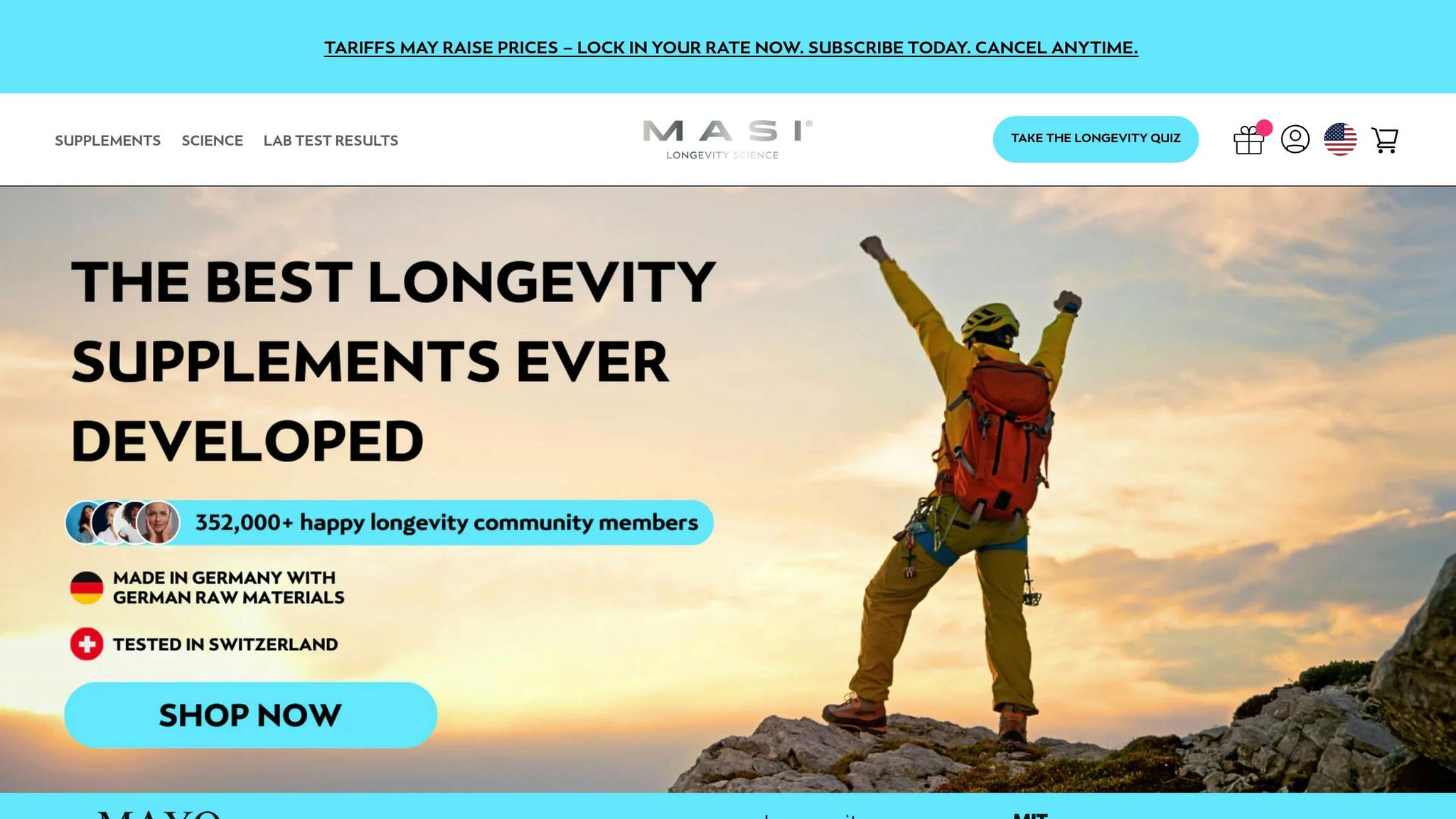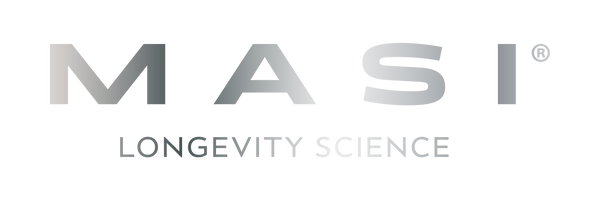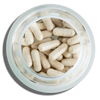Standardizing herbal extracts is tough but crucial. Unlike synthetic drugs, herbal products face inconsistent quality due to plant variability, complex compositions, and fragmented regulations. Here's why it matters and what's being done:
- Raw Material Variability: Plants differ in composition based on genetics, environment, and harvest timing.
- Complexity of Extracts: Herbal blends contain multiple compounds that interact in unpredictable ways.
- Inconsistent Processing: Extraction methods (e.g., water, alcohol) and lack of universal protocols lead to uneven results.
- Regulatory Gaps: Fragmented global standards make quality control challenging.
- Testing Difficulties: Advanced tools are needed to ensure safety, purity, and potency.
Solutions include better farming practices (GACP), advanced testing (e.g., DNA barcoding), and industry collaboration to align global standards. Companies like MASI Longevity Science are leading efforts with strict sourcing, precise manufacturing, and independent testing.
Quick Comparison of Common Extraction Methods:
| Method | Pros | Cons |
|---|---|---|
| Hot Water Extraction | Good for polysaccharides; simple setup | Can degrade heat-sensitive compounds |
| Maceration | Preserves delicate compounds | Long processing time; high solvent use |
| Ultrasound-Assisted | Low solvent use; fast | May reduce extract quality |
| Microwave-Assisted | High yield; quick | Hard to scale for industrial use |
Key takeaway: Standardization ensures safe, effective, and reliable herbal products, especially in the growing anti-aging market.
Standardization of Herbal Products | Chromatographic Techniques | CSI
Main Challenges in Standardizing Herbal Extracts
Achieving consistent quality and reliability in herbal extracts is no easy feat. Several factors contribute to this complexity, directly affecting the safety, potency, and effectiveness of the final products.
Raw Material Variability
The starting point for any herbal extract is its raw materials, which are inherently variable. Plants, as living organisms, are influenced by genetic and environmental factors. Even within the same species, differences in chemical composition can arise due to subspecies and variety [4]. Factors like the plant's origin, the season it’s grown in, and the timing of its harvest all play a role in shaping the levels of active compounds [4]. Environmental conditions - such as temperature, drought, soil nutrients, altitude, and even UV exposure - further influence the production of secondary metabolites, the compounds responsible for a plant's therapeutic properties [3].
Harvest timing is another critical element. The concentration of bioactive compounds can vary significantly depending on when the plant is harvested. Beyond that, how the raw materials are stored, transported, and dried before extraction begins can alter their chemical makeup [4]. As a result, even plants of the same species, grown in different conditions, may show stark differences in the levels of therapeutic compounds [3].
The Complexity of Herbal Compositions
Herbal extracts are naturally complex, which adds another layer of difficulty to standardization. Unlike synthetic drugs that contain a single, well-defined active ingredient, herbal extracts are mixtures of multiple compounds. These compounds often work together in ways that are not fully understood. When several herbs are combined into one formulation, the complexity increases exponentially, as each herb brings its own set of variables.
Adding to the challenge, there are often no established quality benchmarks or reference standards for these multi-herb formulations. The natural variability in plant metabolites - both across different species and within the same species - makes it tough for manufacturers to consistently hit potency targets.
Variations in Extraction and Processing Methods
The way compounds are extracted from plant materials has a major impact on the final product's composition and strength. The lack of universal protocols across the industry leads to inconsistencies between manufacturers. For example, the choice of solvent can dramatically influence the extract's profile. Water is excellent for extracting a broad range of components, while alcohol can preserve certain active compounds [6]. Many manufacturers use water–alcohol blends to capture a wider array of plant constituents, as each solvent extracts different compounds [6]. Glycerin, on the other hand, has less solvent power compared to alcohol [6].
Temperature and processing time also play critical roles. High temperatures during hot water extraction are effective for pulling out compounds like polysaccharides but can degrade heat-sensitive components [5]. On average, the extractable matter from dry botanical materials ranges between 10% and 25%, but this varies depending on the extraction method used [7].
Here’s a quick comparison of common extraction methods:
| Extraction Method | Key Characteristics |
|---|---|
| Hot Water Extraction | Simple setup; great for polysaccharides; risks degrading heat-sensitive compounds |
| Maceration | Preserves temperature-sensitive compounds; requires long times and high solvent use |
| Ultrasound-Assisted | Low solvent use; short duration; may lower overall extract quality |
| Microwave-Assisted | High yield in short time; challenging to scale for industrial production |
Lack of Universal Standards and Regulations
Another major hurdle is the absence of global regulatory standards. Unlike synthetic drugs, which must meet strict requirements for identity, purity, and potency, herbal products face fragmented regulations. Standards vary significantly across countries and regions [8]. What’s acceptable in one jurisdiction might not meet the requirements in another, creating inconsistencies in product quality. This is a pressing issue, considering an estimated 4 billion people - roughly 80% of the world's population - rely on herbal medicine as their primary healthcare source [1]. Shockingly, only about 10% of herbal products in the global market are standardized [1].
As WHO Director-General Dr. Margaret Chan stated:
"Traditional medicines, of proven quality, safety, and efficacy, contribute to the goal of ensuring that all people have access to care" [8].
Without harmonized standards, it becomes extremely difficult to ensure the quality, safety, and effectiveness of these products, even as the herbal medicine market continues to grow [8].
Challenges in Testing and Quality Control
The chemical complexity of herbal extracts makes testing and quality control particularly daunting. Unlike synthetic drugs with one active ingredient, herbal products require advanced analytical methods to identify and measure multiple compounds at once. Contamination and adulteration are ongoing risks. Heavy metals, pesticides, microbial contaminants, or even synthetic adulterants can compromise safety and often require specialized equipment to detect.
Storage adds another layer of difficulty. Many bioactive compounds in herbal extracts are sensitive to light, heat, moisture, and oxygen. Without proper storage and stability testing, products can degrade over time, losing potency and leading to inconsistent therapeutic effects. The absence of standardized manufacturing protocols - covering everything from cultivation to formulation - further exacerbates these issues, potentially resulting in unsafe or ineffective products [8].
These challenges highlight the pressing need for better standardization practices, which will be explored in the next section on solutions and best practices.
Solutions and Best Practices for Standardization
Tackling challenges like raw material variability and testing in herbal extract production requires a mix of strategies and modern technologies. These approaches address every step, from cultivation to final testing, ensuring consistent quality and reliability.
Good Agricultural and Collection Practices (GACP)
The journey to consistent herbal extracts begins with standardized farming and collection practices. GACP focuses on maintaining the quality of medicinal plants through proper agricultural and collection methods [9].
Cultivation Standards are crucial and require attention to factors like farm location, pesticide use, and fertilizer application. For indoor farming, meticulous documentation of materials and conditions is essential [11].
Wild Collection Protocols bring their own complexities. Collectors must adhere to federal, state, and local regulations, as well as guidelines from land managers and property owners [10]. Best practices include choosing harvest sites with abundant, high-quality plants free from pollution. Methods should prioritize the survival of species and minimize habitat damage [10].
Post-Harvest Handling is just as important. Steps like temporary storage, sorting, washing, and dehydration must follow established procedures [10]. Primary processing may involve washing, microbial decontamination, cutting, freezing, distillation, or drying. Uniform drying is especially critical to prevent mold growth [11].
The American Herbal Products Association (AHPA) offers free GACP-GMP guidance and tools covering aspects such as botanical quality, farming standards, wild collection, harvest, post-harvest handling, and more [10].
Advanced Testing and Analysis Methods
Modern technology has transformed quality control for herbal extracts, offering precise tools to identify active compounds and ensure product consistency.
DNA Barcoding is a standout method for plant identification and authentication. It can identify species in complex mixtures and detect contaminants [12]. Unlike other methods, DNA barcoding excels at spotting unwanted materials [13]. A 2023–2024 Chapman University study showcased its potential by testing 54 Ayurvedic products, identifying undeclared plant species in 19 products and fungal species in 12. The study achieved the highest sequencing success with matK and rbcL primers.
Chemical Profiling Methods, like chromatography, help break down complex mixtures into detailed profiles, ensuring consistency [12]. Spectroscopic methods, such as NMR and FT-IR combined with multivariate analysis, can distinguish closely related species and pinpoint geographic origins [12].
Integrated Approaches combine DNA barcoding with methods like chromatography, metabolomics, proteomics, and genomics for comprehensive quality control. This multi-method approach resolves ambiguities in raw material identification and quantification [14].
Creating Reference Standards
Once reliable cultivation and testing are in place, developing reference standards becomes key. These standards ensure batch-to-batch consistency by focusing on the most critical bioactive ingredients. They establish acceptable concentration ranges and validated methods for measurement. Considering the complexity of herbal extracts - often containing multiple active compounds working together - reference standards must reflect this complexity while providing clear quality benchmarks.
Complete Quality Assurance Systems
A robust quality assurance system includes independent testing, stability studies, and traceability. These elements ensure that products meet established standards before reaching consumers.
Multi-Stage Testing should cover raw materials, intermediate products, and finished extracts. Tests for heavy metals, pesticides, microbial contaminants, and adulterants often use multiple analytical methods for cross-verification.
Stability Testing evaluates how bioactive compounds degrade over time. Since many herbal compounds are sensitive to light, heat, moisture, and oxygen, these studies help determine proper storage conditions and shelf life.
Documentation and Traceability track products from sourcing to final packaging. This level of record-keeping enables quick identification and resolution of quality issues when they arise.
Industry Collaboration and Regulatory Alignment
With no universal standards, harmonized regulatory efforts are essential. The lack of consistent oversight in herbal medicine creates challenges, even as 80% of the global population relies on it for primary health care. The market, valued at $83.9 billion in 2020, remains fragmented [16].
Harmonizing Regulatory Frameworks across countries can reduce confusion, cut costs, and boost consumer trust [18]. The World Health Organization (WHO) is working toward this goal with its 2025 guidelines aimed at aligning regulatory expectations for herbal products' safety and efficacy [17].
"The intention behind the 2025 WHO guidelines is to harmonize yet not standardize regulatory expectations through the life cycle of herbal products on safety, efficacy, and global market alignment." - WHO [17]
Industry Organizations play a pivotal role in fostering collaboration. For example, the American Herbal Products Association (AHPA) has developed the Botanical Safety Handbook, which provides safety and toxicity details for over 500 herbs [15]. Similarly, the European Herbal and Traditional Medicine Practitioners Association (EHTPA) advocates for statutory regulation of herbal practitioners, and the Society for Medicinal Plant and Natural Product Research facilitates collaboration through annual congresses [15].
Stakeholder Collaboration - involving researchers, manufacturers, practitioners, distributors, and consumers - promotes innovation, standardization, and regulatory progress [16]. This teamwork builds trust and credibility while addressing conflicts that could hinder advancements.
sbb-itb-4f17e23
MASI Longevity Science's Approach to Herbal Extract Standardization

MASI Longevity Science tackles the challenges of herbal extract standardization with a detailed, multi-step process that combines top-quality raw materials, precise German manufacturing techniques, and independent Swiss laboratory testing. This approach ensures every product meets strict benchmarks for purity, potency, and consistency.
The process begins with sourcing pharmaceutical-grade raw materials from Germany for their anti-aging supplements, including NMN, Resveratrol, Fisetin, and Spermidine. By partnering exclusively with certified suppliers and maintaining tight control over the supply chain, MASI reduces the variability often associated with herbal extracts.
"Standardization of herbal drugs means confirmation of its identity, quality, and purity." – Prajakta Tambare, Firoj A. Tamboli, and Harinath N. More [19]
Once sourced, these raw materials undergo manufacturing in Germany under rigorous pharmaceutical standards. This ensures uniform quality across batches and addresses common inconsistencies in extraction methods, delivering reliable results every time.
A key part of MASI's commitment to quality lies in its independent Swiss laboratory testing. Each batch is thoroughly analyzed by accredited Swiss facilities to check for purity, microbiological safety, and heavy metal content. Customers can access detailed test results via a QR code on the packaging or the MASI website, offering transparency and peace of mind about the authenticity and safety of their supplements.
MASI’s dedication to quality goes beyond testing. Their formulations are supported by research from leading institutions like Harvard and the Mayo Clinic, reinforcing the link between strict standardization and enhanced therapeutic benefits.
Conclusion
The lack of standardization in herbal extracts poses a serious challenge to the quality, safety, and effectiveness of supplements. This issue is especially pressing in the longevity and anti-aging market, where consumers expect reliable and measurable results.
A growing number of supplement users - over 70% - actively check ingredient sourcing and dosages before purchasing. This highlights a rising awareness that not all supplements are equal. For instance, while regular turmeric root powder may only contain 2–5% curcuminoids, a standardized extract can provide up to 95% curcuminoids [20]. Such informed scrutiny makes it clear that consistent standardization is critical.
Standardization ensures consistent levels of active compounds, leading to more dependable clinical outcomes. It also supports strong clinical claims [20]. Alongside this, robust quality control measures - like contamination prevention, ingredient verification, and adherence to regulatory standards - further enhance both product safety and effectiveness [2].
A great example of this approach is MASI Longevity Science. They address these challenges through meticulous ingredient sourcing, precision manufacturing in Germany, and independent testing in Switzerland. Their NMN supplements, which boast 99.1% purity, demonstrate the impact of prioritizing standardization at every step of production. This commitment has earned the trust of over 352,000 members in their global longevity community [21].
MASI's dedication reflects broader trends in the industry, such as green extraction techniques, clinical-grade botanicals, and multifunctional standardization. These advancements are setting the stage for the future [20]. Companies that embrace comprehensive standardization protocols will be best equipped to meet the expectations of today’s discerning consumers.
FAQs
Why is it harder to standardize herbal extracts compared to synthetic drugs?
Standardizing herbal extracts presents unique challenges compared to synthetic drugs, largely due to the natural variability in plants. Factors such as the region where a plant is cultivated, the farming techniques used, the timing of the harvest, and the methods of processing can all influence the chemical makeup of the raw materials. This variability makes it tough to maintain consistent quality and potency.
Unlike synthetic drugs, which typically consist of a single, pure chemical compound, herbal extracts often contain a complex mixture of active components. This complexity, combined with potential issues like contamination or variations in extraction techniques, makes it even harder to achieve uniformity between batches. These hurdles underscore the critical need for thorough quality control and testing to ensure dependable and consistent results.
How does DNA barcoding help ensure the quality and safety of herbal extracts?
DNA barcoding plays a key role in ensuring the quality and safety of herbal extracts. By pinpointing plant species with precision, it guarantees the right raw materials are used and helps uncover any adulteration or contamination. This process strengthens quality control, giving consumers access to pure and trustworthy products.
This technique is particularly crucial for herbal extracts, where natural variations in raw materials can make consistency difficult to achieve. By verifying species accurately, DNA barcoding helps manufacturers create extracts that meet consistent potency and safety standards.
How do differences in global regulations impact the safety and quality of herbal products?
Global differences in regulations can have a major impact on the safety and quality of herbal products. When standards aren't uniform, issues like inconsistent levels of active ingredients, poor quality control, and limited safety testing can arise. This opens the door for subpar products to make it to market, posing potential health risks to consumers.
To address this, creating unified international regulatory frameworks is key. Such frameworks would help set clear quality standards, strengthen safety evaluations, and ultimately safeguard public health worldwide.




